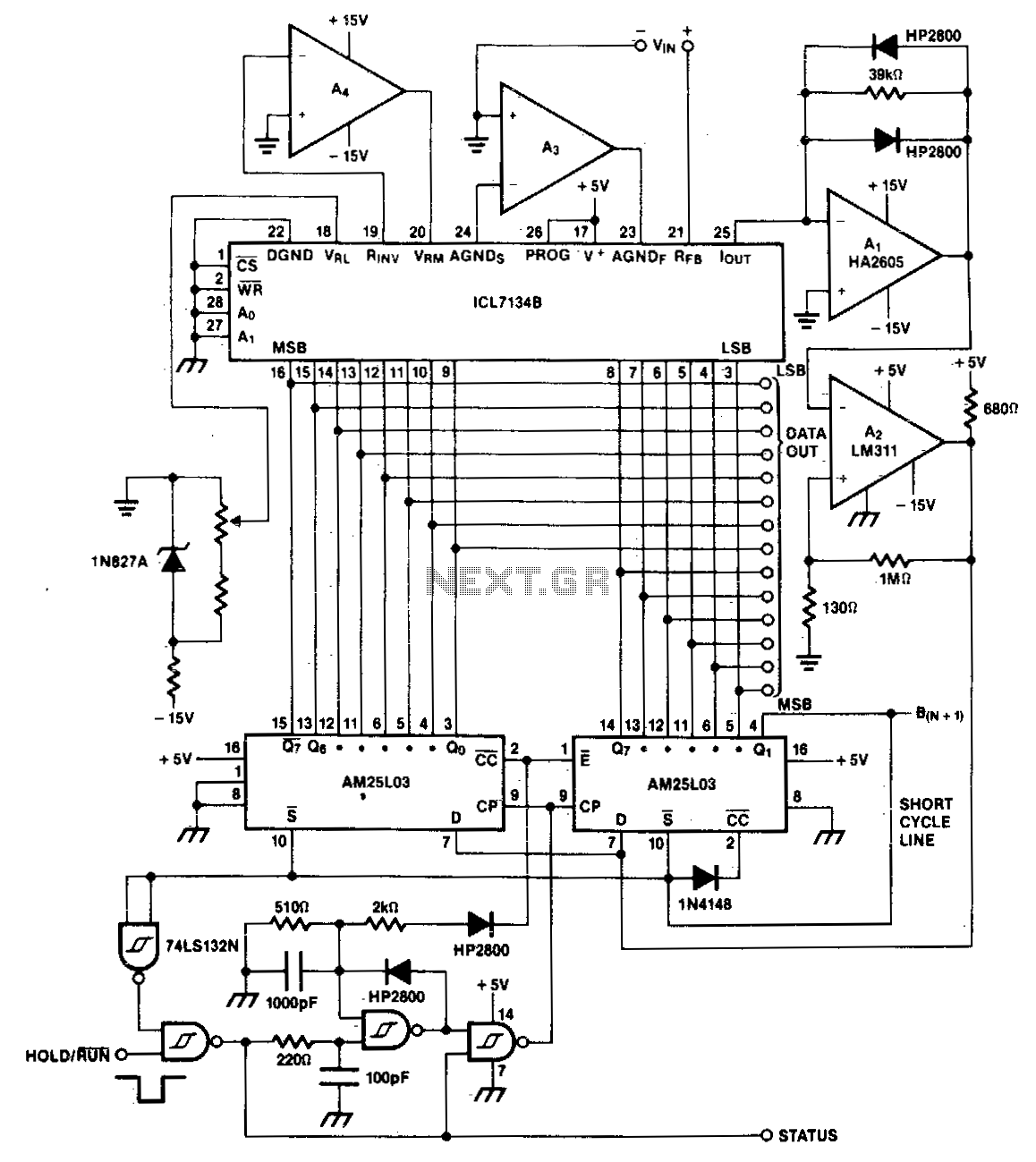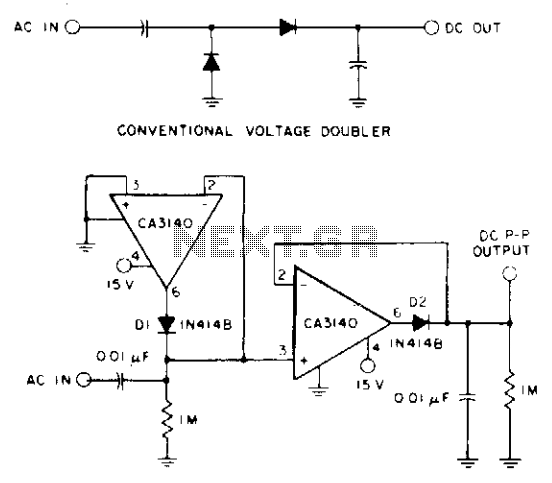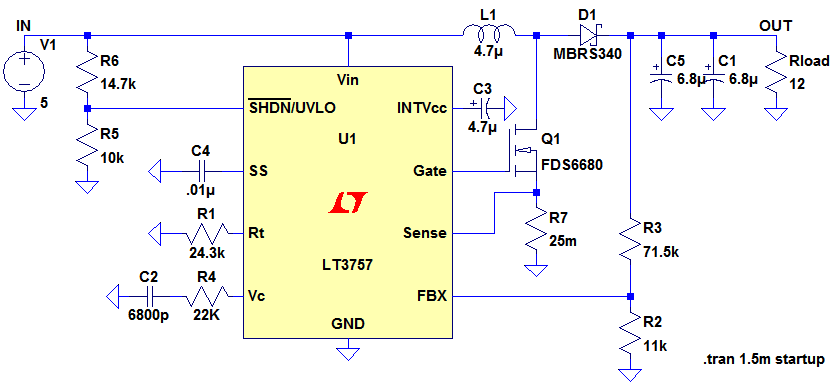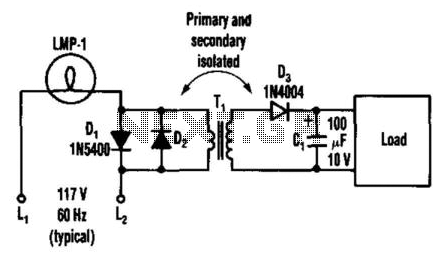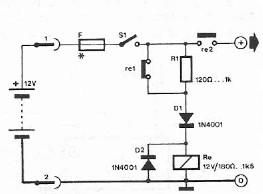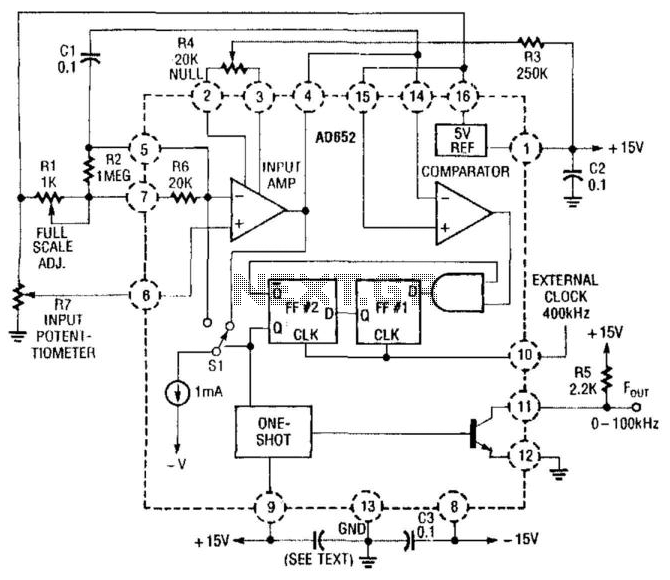
Polarity converter
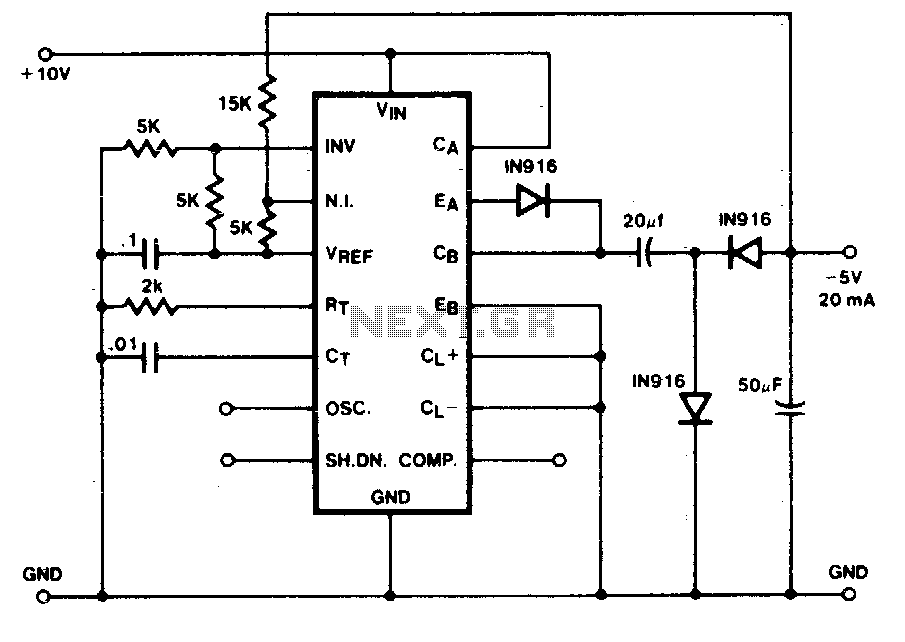
The capacitor-diode output circuit functions as a polarity converter, generating a -5 volt supply from a +15 volt input. This circuit can provide an output current of up to 20 mA without requiring additional boost transistors. The output transistors are current-limited, eliminating the need for extra protection. Furthermore, the absence of an inductor enables the circuit to be stabilized solely with the output capacitor.
The capacitor-diode output circuit operates by utilizing a combination of capacitors and diodes to achieve voltage conversion. The primary component, a capacitor, is charged to the input voltage of +15 volts during one half of the AC cycle. When the polarity of the input changes, diodes are employed to discharge the capacitor, thus providing a negative voltage output of -5 volts.
In this configuration, the diodes serve to rectify the voltage, allowing current to flow in a controlled manner while preventing backflow. The output capacitor plays a crucial role in smoothing the output voltage, ensuring a stable -5 volt supply is delivered to the load. The design allows for an output current of up to 20 mA, making it suitable for various applications that require a negative voltage rail without the complexity of additional components such as boost transistors.
The current-limiting feature of the output transistors is essential for protecting the circuit from overcurrent conditions. This built-in protection mechanism ensures that the circuit operates within safe limits, thus enhancing reliability. The decision to exclude an inductor simplifies the design and reduces component count, which can be beneficial in applications where space and weight are critical factors.
Overall, this capacitor-diode output circuit is an efficient and straightforward solution for generating a negative voltage supply, leveraging the properties of capacitors and diodes to achieve the desired electrical characteristics while maintaining stability and safety.The capacitor-diode output circuit is used here as a polarity converter to generate a - 5 volt supply from +15 volts. This circuit is useful for an output current of up to 20 mA with no additional boost transistors required.
Since the output transistors are current limited, no additional protection is necessary Also, the lack of an inductor allows the circuit to be stabilized with only the output capacitor.
The capacitor-diode output circuit operates by utilizing a combination of capacitors and diodes to achieve voltage conversion. The primary component, a capacitor, is charged to the input voltage of +15 volts during one half of the AC cycle. When the polarity of the input changes, diodes are employed to discharge the capacitor, thus providing a negative voltage output of -5 volts.
In this configuration, the diodes serve to rectify the voltage, allowing current to flow in a controlled manner while preventing backflow. The output capacitor plays a crucial role in smoothing the output voltage, ensuring a stable -5 volt supply is delivered to the load. The design allows for an output current of up to 20 mA, making it suitable for various applications that require a negative voltage rail without the complexity of additional components such as boost transistors.
The current-limiting feature of the output transistors is essential for protecting the circuit from overcurrent conditions. This built-in protection mechanism ensures that the circuit operates within safe limits, thus enhancing reliability. The decision to exclude an inductor simplifies the design and reduces component count, which can be beneficial in applications where space and weight are critical factors.
Overall, this capacitor-diode output circuit is an efficient and straightforward solution for generating a negative voltage supply, leveraging the properties of capacitors and diodes to achieve the desired electrical characteristics while maintaining stability and safety.The capacitor-diode output circuit is used here as a polarity converter to generate a - 5 volt supply from +15 volts. This circuit is useful for an output current of up to 20 mA with no additional boost transistors required.
Since the output transistors are current limited, no additional protection is necessary Also, the lack of an inductor allows the circuit to be stabilized with only the output capacitor.
